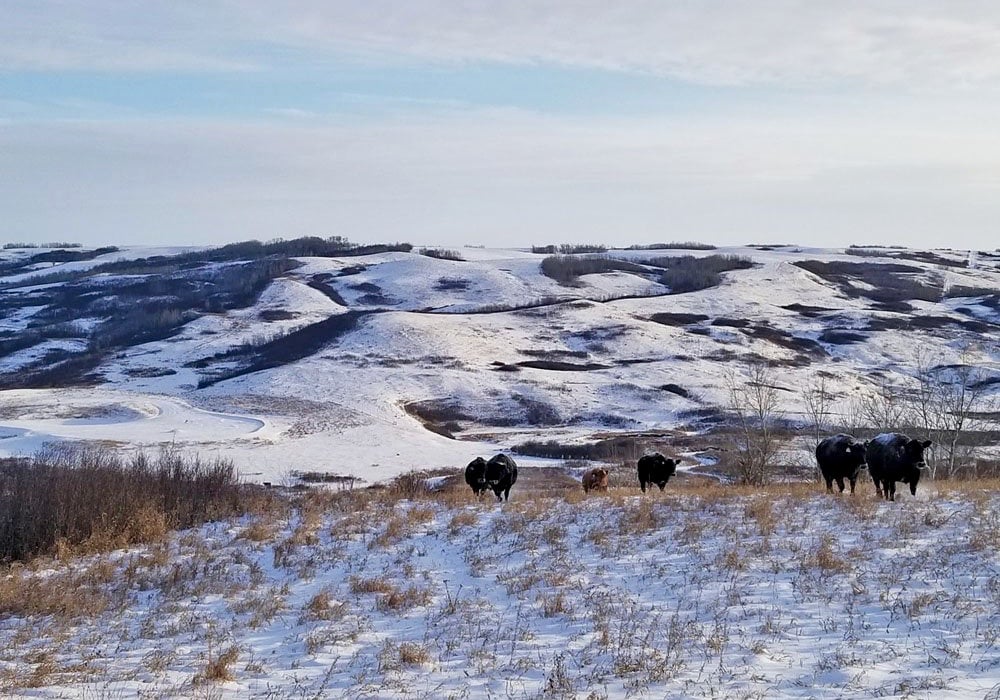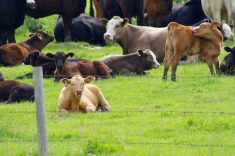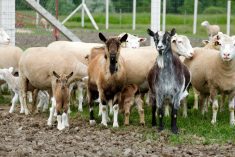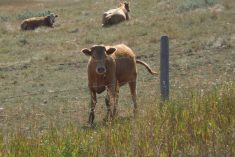If you ranch in southwestern Alberta, it might seem that the big, bad wolf is out to get you. Unfortunately, you’re right.
A University of Alberta study that tracked wolves — and what they eat — found cattle made up 45 per cent of the predator’s diet during the grazing season.
The study tracked wolf predation patterns in southwestern Alberta — from the Pincher Creek area north of Waterton Lakes National Park to the edge of Kananaskis Country — where ranches and the territory of the carnivores overlap.

“Wolves are the real culprits and have been the biggest problem as it relates to beef producers,” said Mark Boyce, a wildlife ecologist and professor of biological sciences.
“When we began our project, ranchers said they believed they were losing some stock to wolves, but through cluster methods, we were able to identify where the livestock went missing and what was taking it.”
Boyce and his research team tracked wolves and their diets over several years using GPS tracking. When packs were clustered in an area for several hours, field researchers would go to the site afterwards to see what the wolves had been feeding on and to collect scat for analysis.
The 45 per cent figure applies to cattle killed by wolves and does not include anything from boneyards (which was classed as scavenging). Deer, elk, and small prey animals (such as bobcat or beaver) ranked behind cattle as prey during the grazing season.
Read Also

Farming Smarter receives financial boost from Alberta government for potato research
Farming Smarter near Lethbridge got a boost to its research equipment, thanks to the Alberta government’s increase in funding for research associations.
During the non-grazing season, cattle slip to the third most important prey after deer and elk, Boyce said during a recent Beef Cattle Research Centre webinar.
The study also found other large carnivores are not as much of a problem as wolves in southwestern Alberta. Cougars like llamas, but will rarely kill beef cattle. Grizzly bears will occasionally kill cattle, but favour boneyards, which they regularly visit.
Boneyards are permitted in Alberta as long as no one complains and they became more prevalent after BSE hit the province in 2003. But experts say they have numerous drawbacks compared to composting deadstock (see story on page 9) and that includes attracting predators.
“They are a bad idea because it brings large carnivores in proximity to ranching operations,” Boyce said in a followup email interview.
“We do not know if developing a taste for cattle makes wolves more likely to kill cattle, but it seems like a reasonable hypothesis.”
The current wolf population in Alberta is between 6,000 and 7,000 animals.
The provincial government has conducted a controversial wolf cull program in the northwestern part of the province, something critics — including Boyce — say is ineffective because eliminating wolves in one area eventually results in higher populations as females will have more pups when there is open territory nearby.
But the situation for ranchers is different, said Boyce.
“There are wolf packs that are well behaved and do not prey on cattle,” he said. “These packs should not be culled because they maintain territories and exclude other wolves. Bad behaviour cannot be corrected, however, and generally predator-control agents agree that the best strategy is to remove the entire pack.”
Wolves may be hunted without a licence during all seasons on privately owned land by the owner or occupant, and on public land by a person authorized to keep livestock on that land. Trapping is allowed on a seasonal basis.
“Yes, the population will rebound and vacated territories will quickly (attract) new wolves (and) it’s a crap shoot as to whether these new wolves will be well behaved,” said Boyce. “But good husbandry can reduce the chances that wolves will develop bad behaviours.”
Ranchers who lose cattle to wolves, cougars, or bears can receive compensation funded by revenues from hunting and fishing licences, paid by the Alberta Conservation Association and the provincial government.
“If you have a confirmed loss due to predation for any animal except for coyotes, 100 per cent of the market value is reimbursed,” said Boyce.
In the case of a probable loss from predation, only 50 per cent of the market value is reimbursed. There is no compensation for missing animals.
Southwestern Alberta accounted for 37 per cent of provincial claims, even though the area is only three per cent of the province’s land base.
















